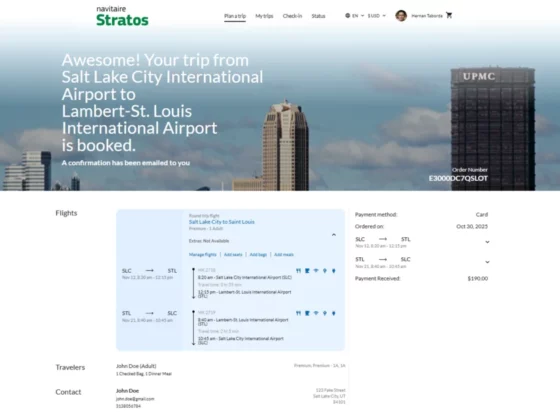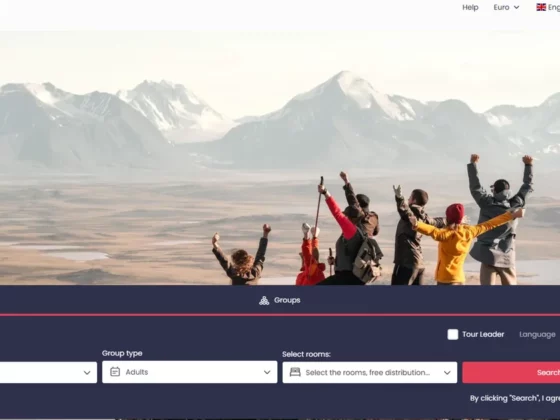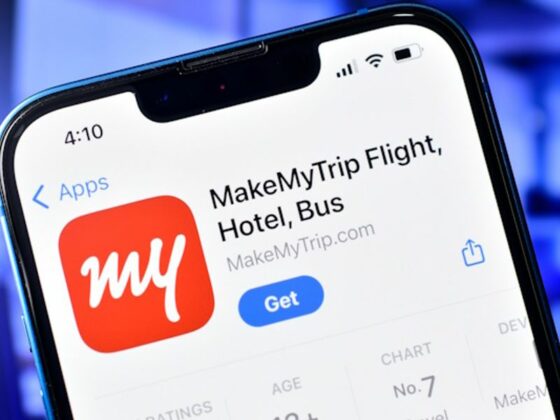Destination marketing can be invaluable for anyone who makes money by increasing the number of people traveling to a location. This includes local and national governments, airlines, travel agents, entertainment venues, tourist attractions, and operators of hotels and resorts. In this article, you will learn more about some of the destination marketing strategies that can help to attract more visitors.
Table of Contents:
What Is Destination Marketing?
Destination marketing is a form of marketing in which a destination is promoted to potential visitors to increase the number of people who travel to that location. The destination can be fairly specific, as with town or city marketing, or much broader, as with region or country marketing.
Ultimately, destination marketing aims to make your location or destination seem more attractive than the main alternatives, boosting the number of people who travel there and assisting the local travel industry. It is also about increasing the destination’s awareness, raising demand and improving its reputation.
Why Is Destination Marketing Important?
To attract travelers to a certain destination, the plus points of that destination must be highlighted. This is especially crucial when one destination competes with another for the same tourists or visitors. An example would be the Caribbean and the Great Barrier Reef, offering excellent diving experiences.
Most destination marketing aims to promote your destination as superior to alternatives by highlighting the things that make it unique or a desirable place to travel to. Successful destination marketing can then greatly benefit the local tourism industry, including hotels, restaurants, bars, airlines, and related suppliers.
Table: Important Goals & Examples of Destination Marketing
| Goals | Benefits | Examples |
|---|---|---|
| Attracting Tourists | Boosts tourism industry revenue. Creates jobs in hospitality and related sectors. Stimulates local businesses and attractions. |
A well-marketed destination attracts international tourists, contributing to economic growth. Increased sales for local shops, museums, and entertainment venues. |
| Building Destination Image | Shapes the perception of a destination. Attracts specific target audiences. |
Successful marketing can position a destination as luxurious, adventurous, family-friendly, etc. Marketing portrays a beach town as a tranquil retreat, distinct from bustling city destinations. |
| Fostering Local Development | Drives investment in infrastructure. Encourages preservation of cultural and natural assets. Promotes community pride and engagement. |
Marketing efforts can lead to new important constructions or road upgrades. Conservation efforts to maintain a destination’s natural beauty. Local residents participate in tourism-related activities and share their culture. |
Who is Responsible for Destination Marketing?
Responsibility for destination marketing typically falls on a dedicated destination marketing organization (DMO) or tourist board. These organizations represent the promoted community or destination and attempt to drive interest in the region amongst travelers by using various marketing techniques.
In many ways, a DMO links the visitor and the destination, first encouraging the visit and providing important information. Hotels, local businesses, attractions, and their owners are often members of a DMO, and funding tends to come from government sources and/or membership fees.
15 Destination Marketing Strategies to Attract More Visitors
Several different marketing strategies can be used for destination marketing purposes, helping to boost overall awareness of a destination and increase the number of people who visit. Below, you will find more information about 15 strategies and how destination marketing organizations can use them to get results.
1. Define the Unique Selling Points
Arguably the single most important step for any organization engaging in destination marketing is to take the time to define what makes your destination unique clearly. A destination can stand out in many ways, such as offering unique activities to visitors or unique natural features like mountains, beaches, or volcanoes.
It could be that your location has a fascinating history, or unique landmarks, like the Eiffel Tower, the Empire State Building, or the Great Wall of China. Perhaps the location’s culture is its unique selling point, and visitors would want to travel to experience local events, museums, or sports clubs. Try to identify as many USPs as possible.
2. Define Target Audience & Market
Another of the best destination marketing strategies involves identifying your target audiences. Consider who will likely want to visit the destination and for what reason. Often, you will need to break this down into several different audiences, who may have different reasons for wanting to travel to your location.
For instance, it could be that your destination appeals to youngsters on a gap year and elderly couples enjoying their retirement. It might appeal to people who enjoy outdoor sporting activities and want to relax on the beach. You must also consider the different groups, such as tourists, business travelers, and students.
Finally, consider whether certain markets are more likely to be interested than others. This could mean people in nearby countries, if you have excellent transport links, or people who speak the same language.

3. Utilize Data for Analytics
Destination marketing organizations can potentially obtain and utilize vast amounts of data for several different purposes. For example, the organization’s website can allow you to use tools like Google Analytics to find out about your visitors, who they are, where they came from, and their motivation.
Offline, you can find out information about existing visitors, such as the average age, whether your destination appeals more to men or women, and what methods of transport they use. Once you have gathered sufficient data, you can analyze it to identify the best people to reach out to, the best ways to reach them, and the best messages to push.
4. Brand Your Destination
Branding is a technique used by businesses to make them easily identifiable. The concept of branding can include logos, color schemes, and other design principles, slogans, or repeated use of certain terminology. Ultimately, branding is about being recognizable and standing out from others.
This principle can be fairly easily applied to a destination. Try to develop a coherent color scheme, use a tagline that says something about the destination itself, create hashtags for people to use on social media, and try to be as consistent as possible with your promotional messaging so that people become familiar with it.
5. Involve All Stakeholders
A significant component of destination management involves looking out for various stakeholders’ interests to establish trust and facilitate engagement. The stakeholders might include officials from your country, city, village, or state, hotels, attractions, restaurants, shopping venues, travel agents, and tour operators.
Try to develop destination marketing strategies that encourage these various parties to participate and support your destination. See if you can get stakeholders to agree to use some of your wider destination branding and to run their own advertising or marketing campaigns to maximize visitor interest.
6. Create An Amazing Destination Website
Regardless of their reasons for traveling, most travelers now use the internet to research their destination before booking. A destination website is ideal for showcasing unique selling points, communicating directly with your target audience(s), and promoting your destination through images, videos, and virtual reality tours.
You can use the website to provide travelers with all the information they need ahead of their trip and promote accommodation options, attractions, events, places to eat and drink, and more. Your website must be optimized for mobile users, while an on-site blog can help to encourage people to keep coming back.
7. Search Engine Optimization
When people use search engines like Google to look for things related to your destination, or features that your destination can offer them, you want to ensure your website is near the top of those search engine results pages. The best way is to create a comprehensive search engine optimization strategy. According to Search Engine Market Share Worldwide Statistics by Statcounter, Google has the highest market share of 91.47% on January, 2024, followed by Bing with 3.43%.
This involves researching keywords, creating content that targets those keywords, and using various other techniques to improve your placement. You can also use SEO principles to promote videos and images too. An on-site blog can also be beneficial, giving you plenty of fresh content to optimize with strategic keyword usage.
8. Experience Marketing
Most travelers are motivated by experiences, so marketing a destination this way makes sense. Instead of showing attractions, use promotional material to show how people experience them. One way to do this is to stimulate the sharing of user-generated content so that people share their own moments on your website and social media.
When you achieve this, you turn your visitors into your destination’s ambassadors. Word-of-mouth promotion can be extremely successful because it is considered more trustworthy than hearing from an organization with a clear motive. On top of this, VR 360 tours can be a great way to allow online users to enjoy their own experiences.
9. Video and Virtual Reality Marketing
Video and virtual reality marketing can go a long way toward boosting your destination marketing efforts. Video content can be easily shared across platforms like Facebook, Twitter, Instagram, and YouTube. These videos can promote local places of interest or feature local people speaking about your destination.
Virtual reality marketing goes a step further and provides ways for your target audience to experience aspects of your destination from the comfort of their home. This could be a virtual tour of a local hotel, a virtual travel experience of a nearby entertainment venue, or 360-degree tours of attractions or landmarks.
Video: Destination Marketing Case Study
10. Social Media Strategies
Social media platforms like Facebook, Twitter, and Instagram are ideal for reaching people and promoting your destination. In truth, the destination marketing strategies offered here are almost endless, from simple promotional posts, images, and video content, to competitions and even viral content or memes.
Most social media platforms offer paid marketing opportunities, such as advertisements or sponsored posts. These can boost the visibility of your social media marketing efforts and be aimed at very specific demographics, meaning you can target people based on age, gender, location, and even their online browsing habits.
11. Work With Influencers
Many modern internet users naturally distrust direct advertising and other overt marketing methods. However, many of these people may be able to be reached indirectly through influencers. In simple terms, influencers are people with an established following on platforms like Instagram, Twitter, YouTube, Facebook, or their own blog. According to The State of Marketing Report by HubSpot, influencer marketing industry was valued at $16.4 billion in 2022.
Their followers tend to be loyal and trust the influencer’s opinions more than they would trust an organization. By partnering with influencers, you can promote your destination across different platforms, even to niche audiences, who are then significantly more likely to react positively to the message that is being promoted.
12. Promote Your Destination On Travel Websites
In addition to having your own destination website, it is important to be able to reach people who do not have an existing awareness of your destination. Travel websites provide a perfect solution, including international travel websites like TripAdvisor, local websites, or websites aimed at specific demographics.
You can use travel websites to promote your destination in various ways, including posting images, publishing stories, creating video content, and even promoting virtual reality tours. You can also use travel websites to monitor reviews, respond to criticism, and improve feedback over time.
13. Online Advertising Strategies
The information and data you have gathered about your visitors and your target audience can be used to inform your online advertising. Using this information, you can target search advertising to specific regions, pay for display advertising on the right platforms, and promote content on third-party websites your target audience uses.
In addition, re-marketing allows you to reach out to people who have previously engaged with your destination website or your DMO’s social media channels. This allows you to remind people of your destination, knowing that they have already shown interest, which can be great for encouraging them to commit to a visit.
14. Offline Promotional Strategies
Once you know your target audience, what they are looking for, and where they are coming from, you should also identify when they are likely to travel. For instance, some destinations attract visitors in the summer months, while others attract people for winter sports. Some might hold greater appeal at Christmas or another holiday.
This then makes it easier to devise a comprehensive offline promotional strategy. Some of the offline methods you use might include television advertising, radio advertising, and promotion within newspapers and magazines. With the latter two examples, you could pay for advertisements, write features on your destination, and target specific local publications in areas where your target audience resides.
15. Start Blogging!
Blogging can play a key role in a destination marketing strategy because it provides an opportunity to share information, entertain an audience, educate them about the destination, and convince them that it is somewhere they want to visit. It also provides a great opportunity to establish yourself or your brand as an expert voice.
Adding new posts to a blog regularly is also an extremely effective way to get potential customers to visit your website multiple times. The blog can even promote specific travel products or special offers, and a comments section can allow readers to engage with your business and one another.

Tourism Trends: Opportunities for Destination Marketing
In the article “Tourism Trends: Opportunities for The Tourism Industry”, you will learn more about the latest trends within the tourism industry and why businesses need to keep up with them.
The tourism industry is constantly evolving, and always keeping your finger on the pulse is vital. While failing to keep up with the latest trends can have several serious negative consequences, staying up-to-date with industry changes provides several important opportunities to improve your business results.
Key Technology Trends Emerging in the Travel & Tourism Industry
In the article “Key Technology Trends Emerging in the Travel & Tourism Industry”, you will be able to learn more about how technology is helping to change the travel and tourism industry.
New technology has the power to disrupt entire industries, but the businesses that thrive are the ones that are willing to embrace new ways of working and adapt to the times. Whether it is capitalizing on the Internet of Things, embracing virtual reality technology, or deploying artificial intelligence, emerging trends can offer real benefits.
Destination Marketing as a Part of Travel Marketing
As a practice, destination marketing can form part of a wider travel marketing strategy. This marketing mix can include everything from personalization marketing to customer experience marketing, content marketing, social media marketing, and even virtual reality marketing.
In the article “The Latest Travel Marketing Tips to Optimize Your Results“, you can explore the importance of travel marketing in greater detail and access some specific travel marketing tips.
Destination Marketing FAQs
Almost any destination will have unique attractions, natural features, places of interest, or cultural aspects that appeal to visitors. The destination marketing strategies listed can all be used to highlight these qualities so potential visitors become more likely to travel to the destination and spend money, boosting the local tourism industry.
Did You Like This Article About Destination Marketing?
You might also be interested in the following articles:
More Tips to Grow Your Business
Revfine.com is a knowledge platform for the hospitality & travel industry. Professionals use our insights, strategies and actionable tips to get inspired, optimise revenue, innovate processes and improve customer experience. You can find all hotel & hospitality tips in the categories Revenue Management, Marketing & Distribution, Hotel Operations, Staffing & Career, Technology and Software.
This article is written by:
Hi, I am Martijn Barten, founder of Revfine.com. I am specialized in optimizing revenue by combining revenue management with marketing strategies. I have over 15 years of experience developing, implementing, and managing revenue management and marketing strategies and processes for individual properties and multi-properties.






